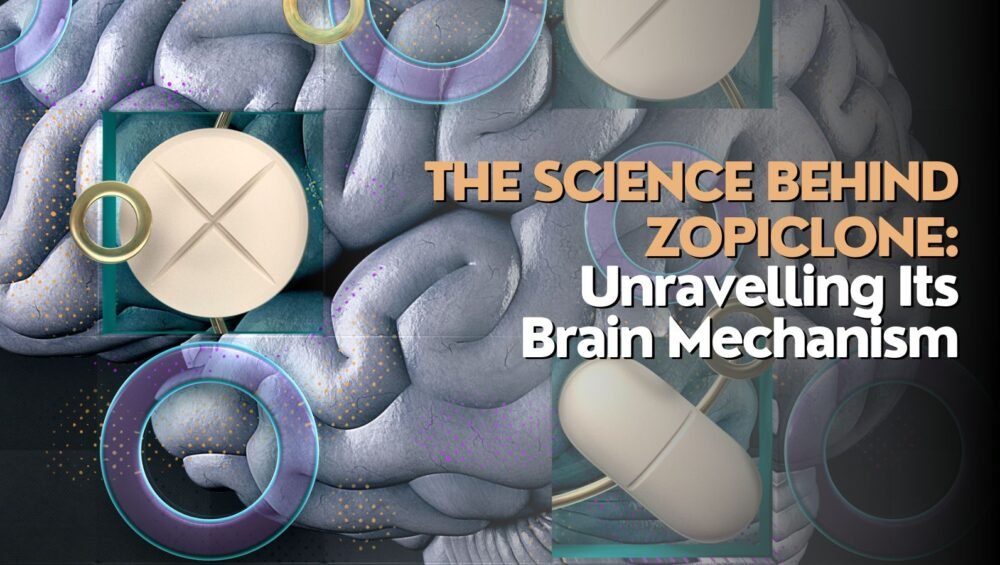Introduction
In a world driven by fast-paced routines and ever-increasing stressors, a good night’s sleep has become a luxury that many yearn for. Zopiclone, a medication commonly prescribed to manage insomnia, holds the promise of a peaceful slumber. But have you ever wondered how this medication works its magic within the intricate landscape of the brain? Join us on this journey as we delve into the fascinating science behind zopiclone and its mechanism of action.
Understanding the Sleep-Wake Cycle
Before we plunge into the science of zopiclone, let’s take a brief detour into the world of sleep. Our sleep-wake cycle is a complex interplay of various neurotransmitters, hormones, and brain regions. GABA, short for gamma-aminobutyric acid, is a key player in this orchestra, functioning as an inhibitory neurotransmitter that helps calm neuronal activity and induce relaxation.
The GABA Connection
Zopiclone’s mechanism centres around enhancing the effects of GABA. This medication belongs to a class of drugs known as non-benzodiazepine hypnotics, or Z-drugs. Unlike traditional benzodiazepines, Z-drugs like zopiclone are designed to selectively target specific GABA receptors, known as GABA-A receptors, which are involved in promoting sleep and reducing anxiety.
Binding and Activation
Upon ingestion, zopiclone finds its way into the bloodstream and crosses the blood-brain barrier. Once in the brain, it locks onto certain subunits of the GABA-A receptors. This binding enhances the receptor’s sensitivity to GABA, effectively increasing its inhibitory action. This intensified GABAergic signalling slows down neural activity, leading to relaxation, sedation, and ultimately, sleep induction.
Fine-Tuning Neuronal Excitability
Imagine GABA as a brake pedal in a car – it helps slow down the vehicle’s speed. Zopiclone essentially strengthens the effectiveness of this brake, ensuring that neurons fire less frequently and with reduced intensity. This delicate balance between inhibitory and excitatory signals is crucial for maintaining healthy sleep patterns.
Duration and Variability
Zopiclone’s effects vary depending on factors such as dosage, an individual’s metabolism, and overall health. The medication’s half-life – the time it takes for the body to eliminate half of the ingested dose – plays a role in determining its duration of action. While some individuals experience a full night of sleep, others might find the effects wearing off sooner.
Caution and Considerations
While zopiclone offers relief for those grappling with insomnia, it’s important to approach its usage with caution. Long-term use can lead to tolerance, meaning higher doses might be needed over time to achieve the same effects. Additionally, sudden cessation can trigger withdrawal symptoms, underlining the necessity of a gradual tapering process under medical supervision.
Conclusion
The science behind zopiclone’s mechanism in the brain is a testament to the intricate interplay of neurotransmitters, receptors, and neural pathways that orchestrate our sleep-wake cycle. By enhancing the inhibitory effects of GABA, zopiclone assists individuals in finding the restful slumber they need to face the challenges of each day. However, it’s essential to approach its use responsibly, understanding the potential risks and benefits it brings to the table. As science continues to advance, a deeper comprehension of zopiclone’s workings may pave the way for even more effective solutions for those in pursuit of a good night’s sleep.







